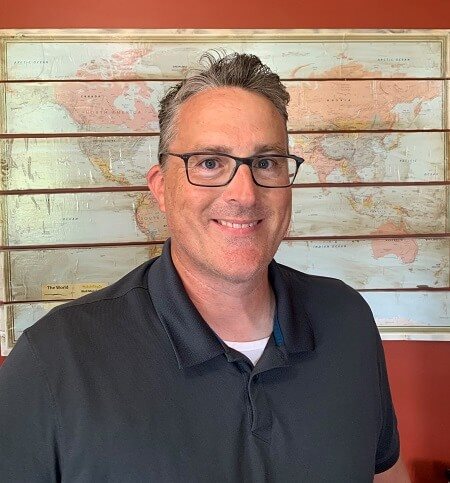
Daniel Johnson, PhD, is an Associate Professor of Geography in the IUPUI School of Liberarl Arts. His research focuses on social and environmental vulnerability and how they inter-relate in space and time. Both can be highly dynamic and when they coincide, there is an increased risk for a disaster. Professor Johnson focuses on modeling these interactions and working toward predictive models that can help increase resilience, prevent disaster or mitigate the effects. The forces of both social and environmental vulnerability are very pronounced in urban areas where disparities between populations are highly evident.
In his free time, Professor Johnson enjoys spending time with his family, gardening, amateur astronomy, fly fishing and tying flies. He also has a German Wirehaired Pointer that he enjoys training and letting him do what he was bred to do, which is assist in hunting expenditures.

If my research can help just one person in a vulnerable community, then it is worth my entire focus.
Professor Johnson
Q and A with Professor Johnson
I had interest in becoming a scientist from a very young age and would change my mind often between physical and social sciences; I decided I would do both. The field of geography allows me to do just that and bridge between physical and social sides to a problem. My father taught secondary school in the inner city for 50 years. When I was growing up, he would bring me to school with him or take me on visits to his co-workers who lived in the inner city. I was always interested in the environmental and social problems of urban areas and I think these experiences played a large role in my research interests.
My work focuses on social and environmental vulnerability and how they inter-relate in space and time. Both can be highly dynamic and when they interact, or coincide, there is an increased risk for a disaster. I focus on modeling these interactions and working toward predictive models that can help increase resilience, prevent disaster or mitigate the effects. The forces of both social and environmental vulnerability are very pronounced in urban areas where disparities between populations are highly evident.
My models have been deployed in several cities to guide the opening of cooling centers during extreme heat events. Some of my earlier work found that cooling centers were not located in areas or neighborhoods where vulnerable populations lived. Using models we developed, cities were able to open cooling centers or use buses, as mobile cooling centers, in neighborhoods where they were most in need.
Apart from seeing some of my work used to help vulnerable communities, I really enjoy the computational side of my research. In order to have the most impact, it is important that I stay abreast of some of the latest developments in Bayesian computing, geographic information systems, and artificial intelligence, especially as it relates to spatial - temporal models.
I try to involve students at every level of my research. I always try to have at least one graduate student work with me and include them in relevant manuscripts for publication. I enjoy involving undergraduate students that have a keen interest in my area of focus.
Federal, state, and local health departments are the primary community members that I work with. I have a strong collaborative relationship with the Centers for Disease Control and Prevention (CDC) and NASA; as well as numerous local health departments across the country.
My next steps will involve scaling the models to a finer scale so that we can pin point blocks in cities that are most vulnerable to the effects of environmental hazards and work to increase resilience. This will involve working with more confidential data from health records and census microdata. Additionally, methods will involve more advanced artificial intelligence approaches that take advantage of the strong spatial – temporal aspects of the data.
Conversation with Professor Johnson
On Friday, April 22, 2022 from 12 noon to 1:00 p.m. Professor Johnson gave a virtual presentation about his work on “Interactions Between Social and Environmental Vulnerability.” During this presentation, Professor Johnson discussed how he uses predictive analytics to create models that can forecast the effects of extreme events. These models are useful as preparation tools for disaster or as aids to plan for mitigation of potential hazards.
Interested in Becoming an IU Indianapolis TRIP Scholar?
Eligibility
IU Indianapolis faculty member conducting translational community-based research
Benefits
- Valued member of an extensive network of researchers/collaborators
- Opportunities to showcase work
Subscribe to the TRIP Scholars of the Month

